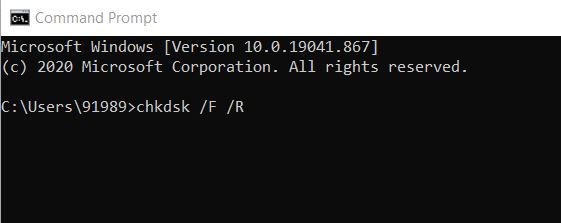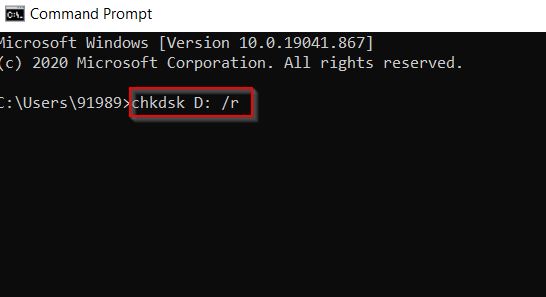Bad Sector is one sector on a computer’s disk drive or a flash memory that permanently managed storage unit on a hard disk. Now the Windows system can’t always fix the bad sectors on a damaged hard drive, but they can surely detect these bad sectors and keep the user from placing data over them.
Page Contents
Fixes for “Bad Sectors in Windows 10”
Any Hard drive that has a bad sector might lose the saved data, and further can make it nearly impossible to restore the same. Anyway, to fix the bad sectors in Windows 10, we have compiled all the required solutions below. We have also explained the ways to scan if the hard drive has bad sectors or not and also the ways to recover data from these sectors.
Also Read
FIX 1: Scan for bad sectors:
Users can Scan for Bad Sectors in the following two ways. Have a look:
- Firstly, right-click on the Hard Drive and select the option Properties.
- On the Properties window, navigate to the option Tools from the vertical menu and then click on Check and Scan drive.
Or
Launch the Command Prompt window. For doing so,
- Navigate to the desktop search bar, type “cmd”, and click on the relevant Command Prompt option from the list. Make sure you launch it with administrator access.

- Now inside the Command Prompt window, type chkdsk /F /R and then press Enter.
If there are any Bad sectors in your system, it will detect them. However, Windows can’t fix them on its own, and you would need to perform some other fixes for the same.
FIX 2: Use third-party software:
Bad Sectors can be a result of several circumstances, including file system errors, malware, overheating, age of the HDD, or something other. It can further result in clusters of memory that can’t be written on further anymore. This exactly means that any data saved in these sectors are prone to lose and very difficult to recover or restore.
However, if you use dedicated third-party data recovery software, it is possible to restore the data. There are several such tools available online that can handle entirely broken partitions and can deal with Bad sectors. We recommend you to use any trusty software amongst them.
FIX 3: Fix disk errors using Command Prompt:
Running a Disk check via the Command Prompt window can possibly help here in case. Follow the process explained below:
- Navigate to the desktop search bar, type “cmd”, and click on the relevant Command Prompt option from the list. Make sure you launch it with administrator access.
- Now inside the Command Prompt window, type chkdsk C: /f and then press Enter. Here you would require to replace the letter C with the letter of your Hard Drive partition.
- Here for users who do not utilize the /f parameter, the chkdsk scan will display a message stating that certain files needed to be fixed. However, it does not fix any errors.
- This chkdsk D: /f command is used to detects and repairs all the logical issues that are affecting your drive.
- Further, for repairing the physical issues, run the /r parameter as well. For doing so, follow the Command,

chkdsk D: /r and then press Enter.
The same is explained through the picture above.
FIX 4: Use Drive Manufactures Utility:
The last fix you can try is using the Drive Manufactures Utility. Look for the process explained below:
- Firstly, take out the Damaged Hard drive. Also, take a new hard drive and appropriate USB adapters.
- Now consider connecting the old hard drive to another computer and then check for bad sectors as explained above.
- Further, connect the new hard drive to the same computer.
- Now use the drive manufacturer’s utility and then clone the old and damaged drive into the new hard drive. (Follow the on-screen wizards to complete the process).
- Finally, place the new hard drive on your Windows 10 device.
This is how you can scan for Bad Sectors in Windows 10 and fix them on your own. We have tried explaining the best possible ways for scanning and fixing bad sectors and further for restoring the lost data.
By the end of this article, we hope all the information mentioned above will help you get done with Bad Sectors in Windows 10. After reading this article if you have any queries or feedback, please write down the comment in the below comment box.
